One of the most prominent trends in the last few years in real estate has been the usage of glass façades. Most of the iconic buildings in Indian metros today are elegant corporate houses with glass façades. Today, glass façades have become an industry with several companies offering a plethora of choices in everything from supplying different glass to customisation, cleaning and maintenance. The reason for architects' and developers' preference for glass is because it reduces the weight on the foundation and hence makes the building lighter as compared to constructing walls. Structurally glazed façade systems create greater transparency than traditional captured systems. There are fewer visual interruptions due to the use of less metal on the glass façades, creating a seamless, continuous transparent look, merging the interiors with the exterior. Since there is little to no exposed exterior metal, there is also less thermal bridging with structural glazing, saving...
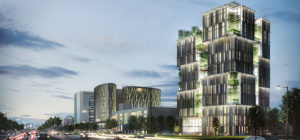
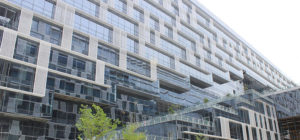
AIS has Pioneered Innovations in Glass with the Best ‘Green’ Parameters
Vikram Khanna talks about AIS Glass company, its growth and success stories, AIS’s various product categories, facilities and infrastructure, some of their major projects, market for glass in India, AIS’s contribution in bringing about the current revolution in the façade and the fenestration sector, main challenges faced by the glass industry, and the future of façade and fenestration industry in India. Excerpts from the interview with WFM. Please tell us about your company AIS and yourself? How long you have been in this business and in the Indian market? Asahi India Glass Ltd. (AIS) is India's leading integrated glass solutions company and a dominant player both in the automotive and architectural glass segments. It commands over 70% share in the Indian passenger car glass market. Established in 1984, AIS' footprint today spans the entire spectrum of the automotive and architectural glass value chains. AIS provides end-to-end solutions right from manufacturing...
Posted on: 24 Apr 2020
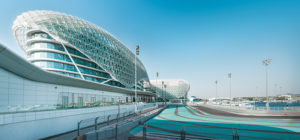
Architectural Glass: Leading the Race in the Middle East
When we saw a building, the first thing which attracts us towards it is the façade. Buildings with glass façades keep us mesmerised by the beauty it adds to the structure. The glass helps the building in connecting them with nature and the surroundings. We can see the use of glass in buildings in various forms, it is being used as insulation material, structural component, external glazing material, cladding material, etc. Glass as a building material delivers beauty, visibility, and light transmission. Glass transmits up to 80% of natural daylight and helps in energy and cost saving. Glass as become the most popular building material because of its versatile nature. The adoption of green technology in construction is also a major reason behind the growing demand for glass in building envelopes. Glass as a building material will always remain in demand. Glass transmits up to 80% of natural daylight How...
Posted on: 30 Mar 2020
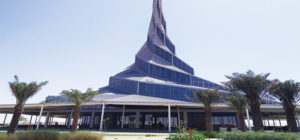
“With the Advent of Technology, Glass has become a Responsive Building Element”
What is your take on the growing demand for glass in niche and low-rise applications? Glass, being a versatile material, founds its usage in many niche applications. Due to its inherent property of being transparent, it has started replacing other common building materials. For instance, we have seen a steep growth in the usage of fire-rated glass for partitions & doors. Full metal or wooden doors are being replaced with small vision panel doors, full glass doors, and full-height fire-rated glass partitions. We have also seen glass being used for various architectural masterpieces, whether it is a luxury retail area, mall or airport. Here, architects make use of specialty glass products that can play with the colours and light. What are the trends in architectural glass in the Middle East? The rulers of the UAE have the vision to move the country forward and make it a futuristic place where...
Posted on: 26 Mar 2020
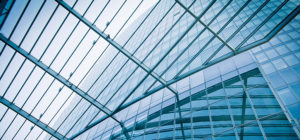
Energy-Efficient Glass in Buildings
Talking about the building materials which form an essential foundation of the construction industry, leads us to explore what kind of materials are highly considered in the research and development processes. Specifically, the materials which significantly affect the building’s functional performance should be the most highlighted in the development concern. [caption id="attachment_36528" align="alignleft" width="300"] Glass Coatings Positions[/caption] Architectural glass is one of the building materials considered a fruitful subject to be discussed. Why? Architects rely on glass and implement it in their designs as an attractive material adds authentic purposes to the buildings. Civil engineers take care of the structural behaviour of the façade system which includes glass, glass behaves as a part of the whole system mainly in bearing the dead loads. Also, the architectural glass is a big concern of the mechanical engineers since it is related to calculating the thermal loads in a building, from here we...
Posted on: 13 Mar 2020
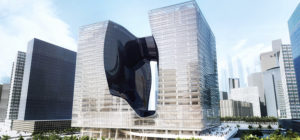
Opus – A Beautiful Glass Building in the Middle of the City
Depending on the viewing angle, the appearance of the Opus glass building oscillates between a hollowed-out cube and two towers connected via a sky bridge. The building’s appearance plays off the strong contrast given to its two distinct façades of the all-glass envelope: a clear glass curtain wall with a distinct fritting pattern for the exterior faces and a blue tinted glass for the free-form interior void. Many of the challenges of this façade were unprecedented in the region and helped drive innovation both in engineering and fabrication. Exterior Facade [caption id="attachment_35236" align="alignleft" width="351"] The Building is wrapped in a simple, clear Glass Curtain Wall and makes Maximum use of the Material’s Inherent characteristics[/caption] Against the visual cacophony of endless towers vying for attention in Business Bay, it was decided to give the OPUS a certain quality of muteness. The glass building is wrapped in a simple, clear glass curtain...
Posted on: 22 Jan 2020
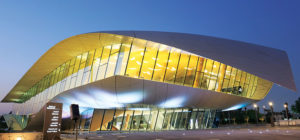
Glass Facade – A Boon for the Fenestration Industry
Glass is one of the oldest and most popular material in building construction. Over the years, it has emerged as one of the widely used facade materials around the world. Glass when used as a facade material, makes the building look more beautiful. One of the most important benefits of glass is that it allows natural light to enter the building, thus saving the electricity costs. Glass Facade also offers extraordinary flexibility, which makes it the most preferred choice amongst the architects, builders and consultants. In this Article, the experts have given their opinions on how glass is revolutionizing the building industry in the Middle East. Through this article, you will also get to know about the new technological trends in the glass facade and how they benefit the buildings in the region. Demand for glass facades in Building Envelope Over the centuries, the glass has evolved dramatically. For years,...
Posted on: 26 Sep 2019
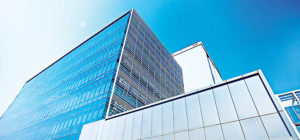
Usage of Glass Façades in Commercial spaces
Real Estate has witnessed significant transformations in the last few years, be it, demand and supply or incorporation of new technology or usage of new materials in construction. However, with a shift in a developer mindset now growing towards the idea of promoting sustainability and green building concepts. The industry is looking for an opportunity to become more involved through construction technologies that are being developed to pave the way for long-term practices in sustainable construction. One of the many such technologies is the use of high-performance glass or glass façades. [caption id="attachment_40048" align="alignright" width="500"] Mindspace, Airoli West – usage of high-performance glass for façades has become increasingly popular[/caption] In the recent years, usage of such high-performance glass or glass façades has become increasingly popular especially in commercial spaces. Perfect for today’s modern day workplaces, developers are using glass to bring out efficiency and enhance the aesthetics of the structure....
Posted on: 12 Jun 2019
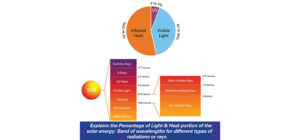
Efficient Use of Glass in Façade & Fenestration
Glass For thousands of years, Glass was thought of as something to look at. It was valued in making precious objects for decorating purposes. Glass really became useful when it was thought of as something to look through. Ancient art is now a medium of architectural advertisement. Glass is architectural. Its transparency, masking, fabrication ability, adaptability and specialisation highlight its suitability for structures. To meet the specific construction needs, it can be made transparent, translucent, opaque, diffused or stained by mechanical or chemical means. Processed and cured correctly, it is sound insulating, heat absorbent, heat reflecting, weather resistant, non-abrasive, and incombustible. Efficient Use of Glass in Façade and Fenestration It starts with understanding the building requirements and selecting the optimum basic glass and its processing. With the logical and correct selection, glass can be a very useful and friendly material by providing optimum daylight, energy efficiency, sound insulation, comfort and...
Posted on: 31 May 2019
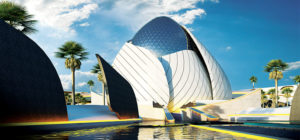
The Glass Age
The production of window glass started in 1836 in a factory in Belgium. Since then, the product has come a long way. Glass has become an inevitable part of any urban building. One of the first milestones was the invention of tempered glass in 1929 by the French glass company Saint-Gobain. The first double glazing was produced in 1947 in Belgium, and it became popular due to its insulation capacities, both thermal and acoustic. During the 1950s, the British manufacturer, Pilkington invented a new method of glass production called float process and since then float glass has become the rage. By the end of the 20th century, 90% of the flat glass used throughout the world were float glass. Enameled and tinted glass followed this. [caption id="attachment_31416" align="alignright" width="150"] ANSHU SHUKLA Deputy General Manager – Design, Kalpataru Ltd.[/caption] With the material science constantly pushing its boundaries, we saw the entry...
Posted on: 29 May 2019
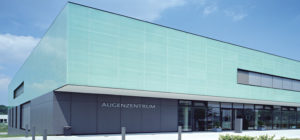
Glass Ceramic For Façade Systems
Construction industry is the largest energy consumer and greenhouse gas emitter, both in the developed and developing countries. We must admit the role of construction industry in the global warming issues. Keeping the social responsibility towards the future generations in mind, many new innovative products are coming in to the market. One such product is glass ceramic. Glass ceramic stands as a true performance circular economy material which offers a wide range of applications bringing full creative freedom and functionality. The main advantage of glass ceramic is not only its contribution to the environment, but of a unique, exclusive and durable material, produced under stringent quality standards which also offers an exciting aesthetics. This glass ceramic material is almost 100% recyclable. Glass ceramic plays an important role in the careful use of natural resources and improvement of the sustainability balance in building projects and design objects. This is an enormously...
Posted on: 10 Jan 2018
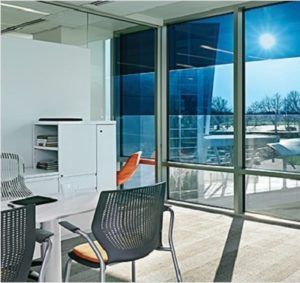
New Developments in Dynamic Glass
From very early on, man has been living outdoors and has evolved to need exposure to sunlight for our health and well-being. With the advent of architecture, man has sought means of replicating this natural light, and has developed artificial lighting to provide lighting on demand. Such invention has freed us from daylight dependence and has transformed the way we live and build. Today, we spend around 90 per cent of our time in enclosed spaces, lit with fluorescent light, because of which daylight harvesting has been progressively neglected. It is only recently that scientists have started to understand how light influences our body and mind. In addition to the cells that contribute to the formation of images, our eyes also contains cells responsible for the so-called “non-visual effects” of light. Those cells are light-sensitive and key for the regulation of several of our biological functions such as sleep, mood,...
Posted on: 28 Aug 2017
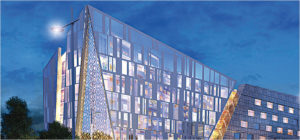
Architectural Glass: Potential for Future Development as a Structural Element
Glass in architecture has been used in façades and as a construction material for many years. The invention of steel and plate glass in the late nineteenth century made possible an imaginative leap - the transparent steel framed enclosure - which underpinned the development of architecture in the twentieth century. Glass perhaps, is the only material that has seen continuous technological advancement since its first use as a building material. This is evident from the vast range of glasses now available to clad the buildings depending on the usage and budget. In this article, we present are view of today’s available architectural glass types as well as their characteristics and potential for future development of glass as a structural material. In the past few decades, the use of glass in buildings has remarkably increased. As a result, several transparent buildings have been constructed. The flexibility or versatility of glass keeps...
Posted on: 17 Aug 2017
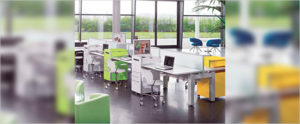
Glass Facades – Culprits or Geniuses?
First things first, I wish to make it clear that the views presented in this article are not influenced or biased in any way by me being a stakeholder in the glass facade industry. Yes, my profession as a glass supplier did motivate me to pen (rather type!) this down but my aim here is to present, as objectively as possible, the reasons why glass is being used as ubiquitously as we see today, and whether or not we are right in doing so. This article focuses on three key aspects of a glass facade - day lighting, energy and safety - and in the process analyses its effects, its benefits, the problems arising from its use and tools to help overcome some of these problems. For ease of understanding and to maintain focus on the core topic of this discussion, I have overlooked the regulatory requirements of glass facades...
Posted on: 02 Mar 2017
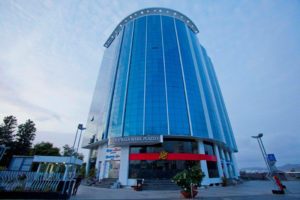
Asahi India Glass Ltd. launches a new range under its Ecosense brand
Mumbai, 8th September 2016: Asahi India Glass Limited (AIS), India’s leading integrated glass company expanded its existing portfolio in the architectural segment with the introduction of a new range under its Ecosense range of high-performance glasses (The Green Standard in Glass). The new range – Excel combines the best of functionalities with best-in-class eco-friendly features. Ecosense Excel is a specialized green building glass with advanced solar control and low-E properties. This glass product comes with excellent thermal insulation and best-in-class solar control performance. Excel (Double Low-E glass) can be used in a number of applications, like structural glazing, facade glazing, bolted systems, curtain walling and fenestration applications, insulated glazing units, laminated double glazed units, laminated, heat treated and bent glazing units. The two series in which Ecosense Excel is available are – Pearl and Sparkle. The shades available in these two series are Clear, Blue, and Green. Mr. Vikram Khanna, COO...
Posted on: 13 Sep 2016
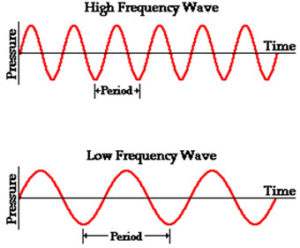
Glass and Acoustic Insulation
No matter where it originates, from railways, aircraft or factories, noise is all around. Future trend research suggests that traffic and noise in general will only get worse. The careful and considered selection of glass can be crucial in helping to reduce noise level and meet noise requirements. In a fast urbanizing society, sound is one of the most significant causes of stress and fatigue. The irony here is that sound is a silent killer and most people do not know its significance. Many new buildings are using glass extensively, and many without any consideration to how well a glass façade will block sound. Sound Sound is a vibration that propagates as a typically audible mechanical wave of pressure and displacement, through a medium such as air or water. In physiology and psychology, sound is the reception of such waves and their perception by the brain. The two factors...
Posted on: 26 Aug 2015

